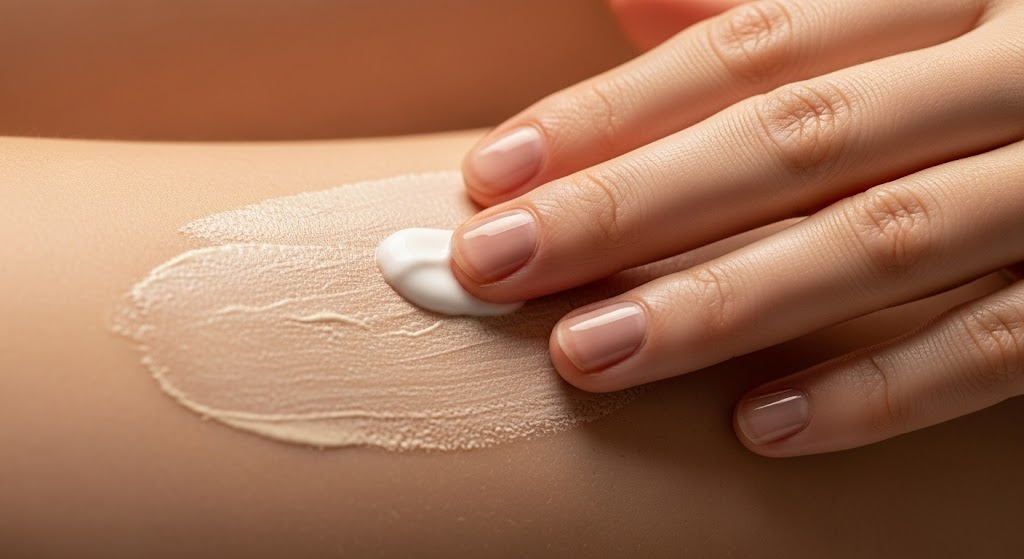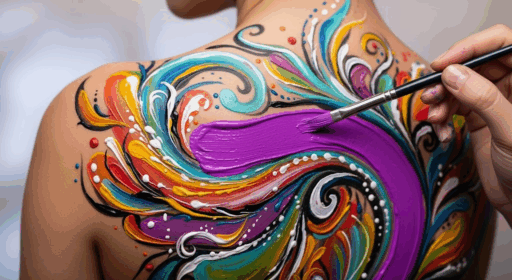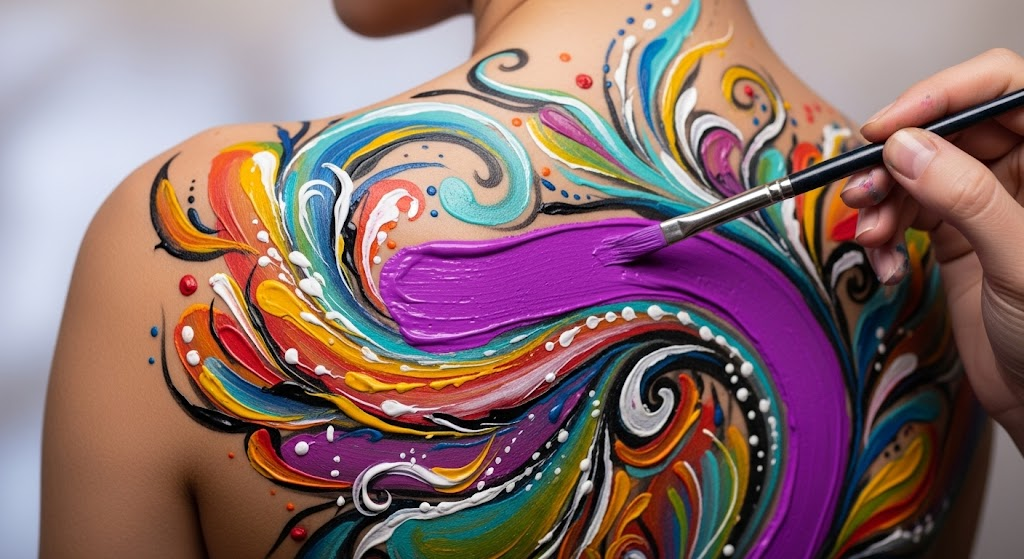I was sitting one day, painting with my kid, when I wondered, ‘ Is acrylic paint safe for skin?’ Have you also caught yourself staring at that tube of acrylic paint, wondering if it’s friend or foe?
Maybe you’re planning face paint for a party, or your toddler just turned themselves into a rainbow warrior.
The truth is, most of us treat acrylic paint as if it can be used for every art form, including the one you do on your skin. But you might be doing more damage than designing on your skin.
Let me walk you through what you need to know about acrylic paints and what paint is safe for skin.
Is Acrylic Paint Safe for Skin?
We’ve all sat down to think, Is acrylic paint safe for skin? The truth is that acrylic paint is not the best idea for your skin’s health.
Let me break down why your skin might not appreciate this colorful encounter.
Why Acrylic Paint Isn’t Skin-Friendly
Regular acrylic paint contains chemicals that weren’t designed with human skin in mind. These paints often include ammonia, formaldehyde, and other preservatives that can cause reactions.
Your skin absorbs more than you think, and these ingredients can penetrate through your pores.
What It Actually Does to Your Skin
When acrylic paint meets your skin, several things can happen. It can cause contact dermatitis, leaving you with red, itchy patches. Some people experience burning sensations or develop rashes that last for days.
The paint also clogs pores, which can lead to breakouts and skin irritation.
The Drying Factor
What most people don’t consider is that acrylic paint dries by pulling moisture from whatever it comes into contact with. That includes your skin as well!
This process can leave your skin feeling tight, flaky, and uncomfortable for hours after removal.
What Paint is Safe for Skin?

Not all paints are created equal when it comes to body art. Allow me to tell you what you should look for when choosing something that won’t turn your skin into a science experiment.
What to Look Out for When Choosing Body Paint
If you find yourself in a situation where you have to use paint on your body, be sure to investigate the following components while searching for the right option
- FDA approval: Look for products specifically labeled as cosmetic-grade.
- Non-toxic certification: This should be clearly stated on packaging.
- Hypoallergenic formulas: Essential for individuals with sensitive skin.
- Easy removal: Should wash off with soap and water.
- Skin-tested products: Look for labels that are dermatologist-tested.
- Expiration dates: Fresh products are safer than older ones.
Safe Ingredients to Look For
A body paint that claims to be safe for your skin should contain these ingredients:
- Glycerin: Keeps skin moisturized during wear.
- Aloe vera: Soothes and protects skin.
- Natural waxes: Provide a safe color base.
- Mineral pigments: Safer than synthetic dyes.
Ingredients to Avoid
Make a run for your life if you see these written in the body paint’s ingredient list:
- Ammonia: Can cause severe skin reactions.
- Formaldehyde: Known irritant and potential carcinogen.
- Heavy metals: Lead, mercury, and cadmium in pigments.
- Parabens: Can cause allergic reactions.
- Artificial fragrances: A Common cause of skin sensitivity.
My Personal Recommendations for Skin-Friendly Paints
Based on safety, ease of use, and skin-friendly formulas, here are my top picks for body paint:
| Product | Why It’s Safe | Best For | Price Range |
|---|---|---|---|
| Snazaroo Face Paint | FDA approved, non-toxic, dermatologist tested | Kids and adults, face painting | $15-25 |
| Mehron Paradise Paint | Professional-grade, skin-safe pigments | Detailed body art, professionals | $8-15 per color |
| Ruby Red Face Paint | Hypoallergenic, easy removal, no parabens | Sensitive skin, beginners | $12-20 |
| Wolfe Face Art & FX | High-quality ingredients, long-lasting, safe | Theater, special effects | $6-12 per color |
| TAG Body Art Paint | Water-based, non-toxic, vibrant colors | Sports events, parties | $10-18 |
How to Take Care of Your Skin After Using Body Paint

So you’ve had your fun with body paint; now what? Your skin needs some TLC to recover from its colorful adventure.
Immediate Removal Steps:
Start with lukewarm water and gentle soap. Hot water can irritate already sensitive skin. Work in circular motions, but don’t scrub aggressively. Pat your skin dry instead of rubbing it with a towel.
Post-Paint Skin Care:
Apply a fragrance-free moisturizer within minutes of cleaning. Your skin will be thirsty after paint removal. Look for products with ceramides or hyaluronic acid to restore the skin barrier.
Avoid products with alcohol or strong fragrances for at least 24 hours.
Watch for Warning Signs:
Watch for persistent redness, swelling, or itching that lasts more than a few hours. If you notice any concerning symptoms, consider seeing a dermatologist. Some reactions can take time to develop fully.
Final Thoughts
The bottom line is that regular acrylic paint and your skin aren’t meant to be best friends. While it might seem convenient to grab that tube from your craft drawer, your skin deserves better treatment.
Investing in proper body paint isn’t just about safety; it’s about having a better experience overall. High-quality body paints apply smoother, look better, and come off more easily. Plus, you won’t spend the next day dealing with irritated skin.
When it comes to putting anything on your skin, it’s always better to be safe than sorry. Your skin is with you for life, so treat it kindly!








